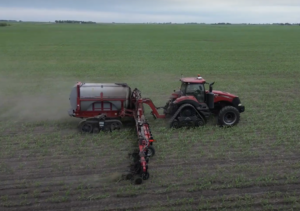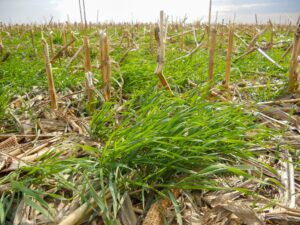By: 4R Plus
August 2024
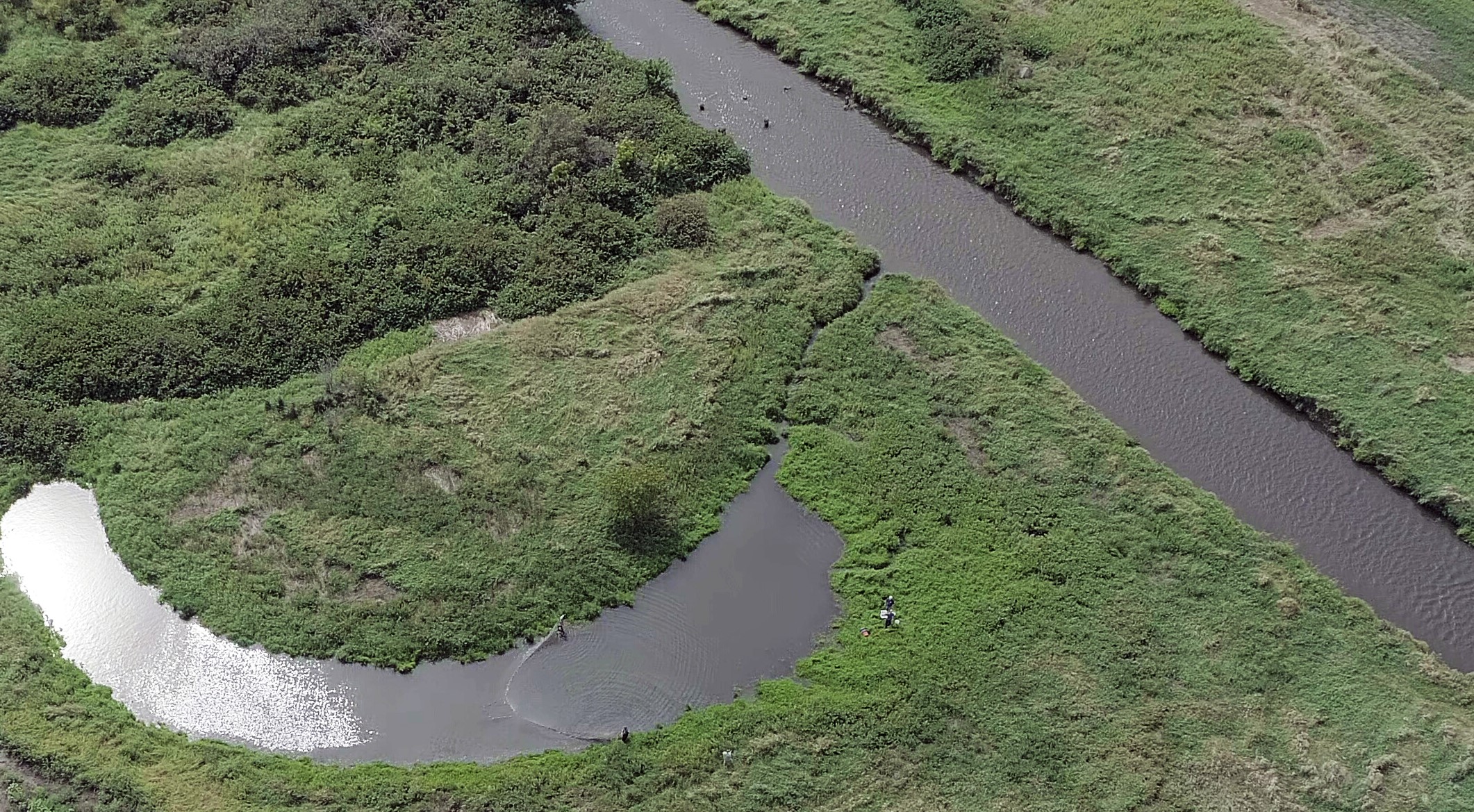
Farmers with oxbows report these pockets in their fields are teeming with life. Around and within these small bodies of water, you’ll find fish, turtles, birds, butterflies and more. In addition to creating a fun place for families, an oxbow also offers practical benefits for the farmer.
“It’s hard to think of a downside when it comes to restoring an oxbow,” says Amy Crouch, Little Sioux project director with The Nature Conservancy in Iowa. Interest in these relatively inexpensive and low-maintenance conservation features is on the rise.
“It’s a practice that started in the Boone watershed and has been spreading across the state,” Crouch explains. “Oxbow restoration has been met with a lot of interest and enthusiasm from landowners and conservation partners.”
What is an oxbow?
An oxbow is a former bend in a river or stream that was cut off from the main body of water when it forged a new channel. When they are young, these meanders maintain a small attachment to the river or stream. Water levels rise and fall alongside the main body of water. But over time, they lose that connection and dry out. Eventually, tillage and erosion fill them with silt, Crouch says.
When an oxbow is restored, soil probes are used to determine how deep the oxbow was initially. Then, silt and soil are removed to restore that oxbow to its original depth. The excavated sediment and organic matter can be spread on fields, often boosting yields. This material is typically rich in nutrients. Finally, the area around the oxbow is seeded, establishing vegetation that protects against erosion and serves as a vital habitat for wildlife and fish.
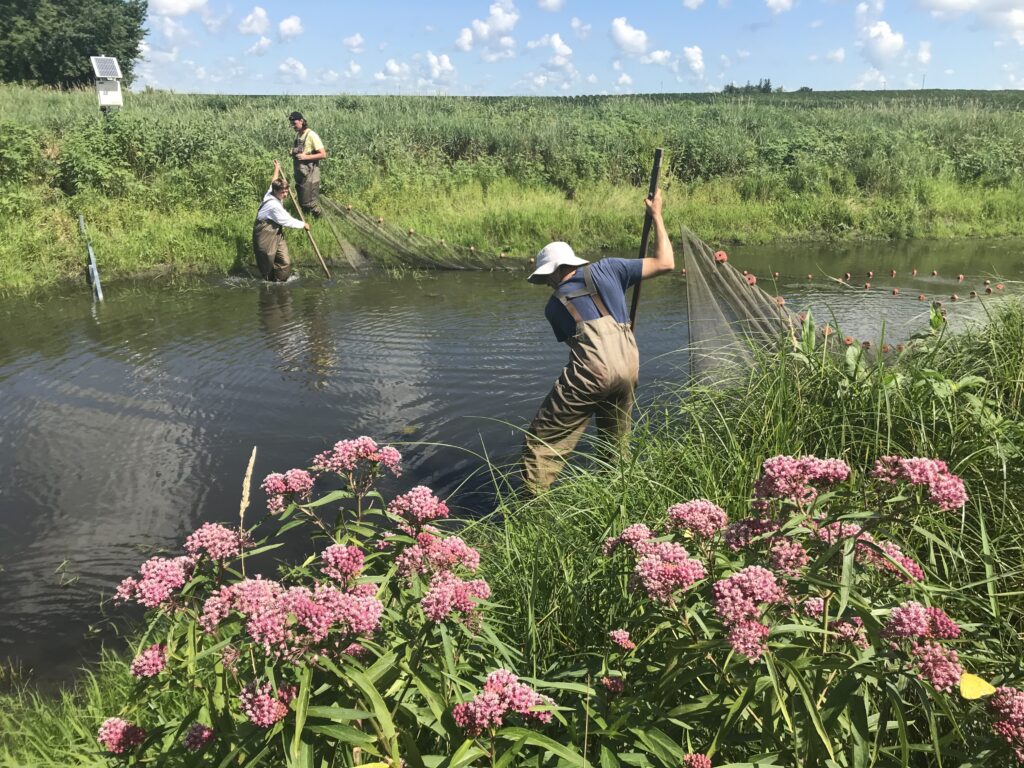
“Anywhere you have water that flows, there may be oxbows that can be restored,” Crouch says. Oxbows are often found in non-cropped or less productive areas of fields, adding to their appeal.
Restored oxbows typically only take up around half an acre of land, in part to align with efforts to create nursery-like habitats for the endangered Topeka shiner fish species. The presence or absence of this native freshwater fish reflects on the health of the ecosystem. By creating great habitats for fish, wildlife and insects, oxbows foster biological diversity.
Oxbows beneficial in times of flooding and drought
“Oxbows have so many benefits during drought or flood,” Crouch says. “In times of drought, they hold water, which is helpful for grazing livestock.”
In wet years, they hold water and slowly release it into the soil, preventing water from rushing downstream, Crouch says. “Oxbows are a natural, inexpensive solution to help mitigate flood damage.”
The latter was tested in Crouch’s Little Sioux watershed this year. While the flooding was too extreme for oxbows to save entire fields, Crouch says they lessened damage and erosion. She was impressed that oxbows held their shape and were not washed out.
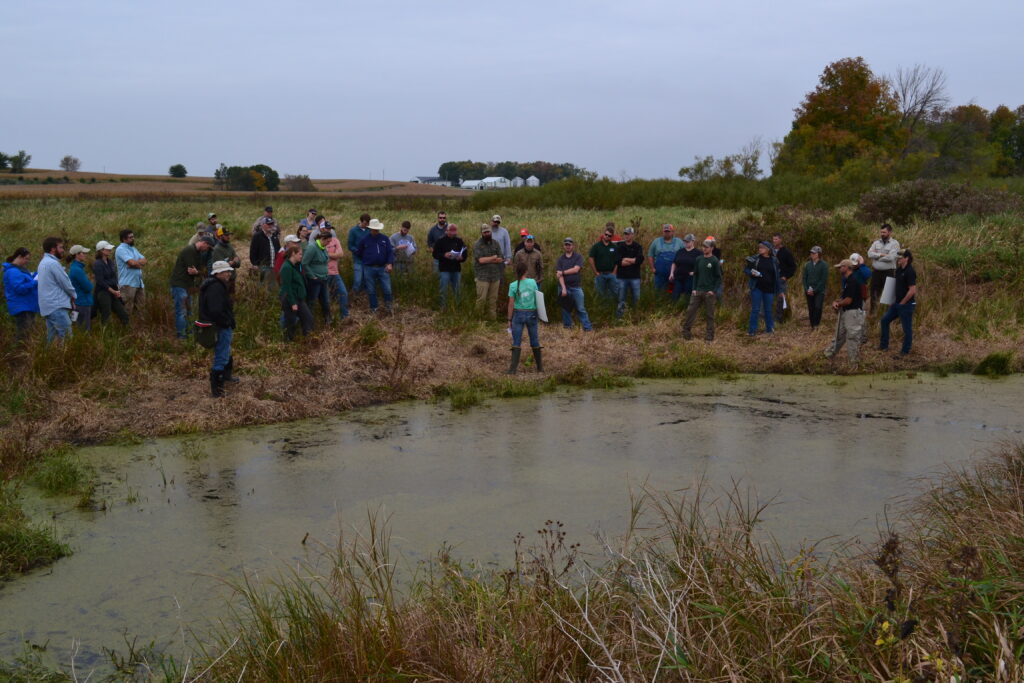
Improved water quality another advantage
Another oxbow advantage is its filtration abilities. Farmers can outlet tile into oxbows, and these multipurpose oxbows can help filter out excess nutrients like nitrates before the water flows into the water table or into surface water. On average, oxbows can filter out 62% of nitrates, with that percentage climbing in drier years.
Financial and implementation support is available for tile-fed oxbows through the Partners for Fish and Wildlife Program, Practical Farmers of Iowa and the Iowa Soybean Association, using funding provided by the Iowa Department of Agriculture and Land Stewardship (IDALS).
Costs and cost-share opportunities
Oxbow restoration typically costs around $13,000 per half acre, though the exact figure will depend on the location and size of the project, says Karen Wilke, Iowa freshwater specialist and Boone River project director for The Nature Conservancy in Iowa. Cost-share opportunities are available at the federal, state and local level.
Your local Natural Resources Conservation Service (NRCS) office, DNR private lands biologists, Fish and Wildlife office, or local IDALS staff are all great resources. You can also reach out to Amy Crouch or Karen Wilke for support on an oxbow restoration project.


